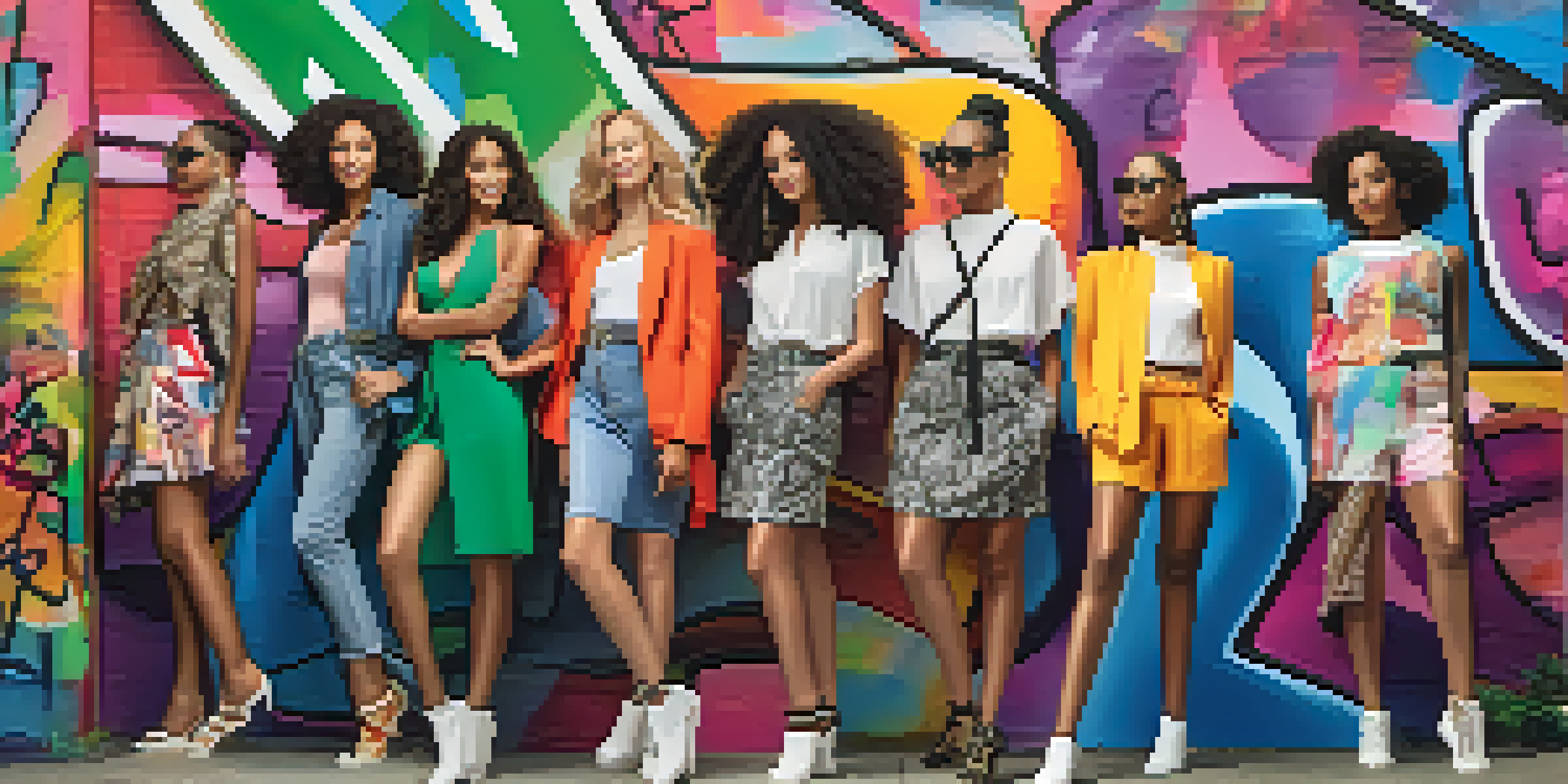Fashion Advertising and Its Role in Shaping Body Image Views

Understanding Body Image in Today's Society
Body image refers to how individuals perceive themselves and their physical appearance. In our image-centric society, this perception is heavily influenced by various media, particularly fashion advertising. The fashion industry often sets unrealistic standards, creating a narrow definition of beauty that many feel pressured to conform to.
The Evolution of Fashion Advertising
Fashion advertising has transformed significantly over the decades. From the glamorous models of the 1950s to today’s diverse representations, the industry has seen shifts in what is considered attractive. However, despite these changes, many campaigns still perpetuate idealized body types, leaving many feeling inadequate.
Body Image Influenced by Media
Media, especially fashion advertising, heavily impacts how individuals perceive their bodies, often promoting unrealistic beauty standards.
The Role of Social Media in Fashion Advertising
Social media has revolutionized how fashion is advertised and consumed. Platforms like Instagram and TikTok allow brands to reach audiences directly, often showcasing aspirational lifestyles and body images. Unfortunately, this can lead to comparison culture, where individuals measure their worth against curated online personas.
Positive Shifts: Diversity in Fashion Campaigns
In recent years, there's been a noticeable push towards inclusivity in fashion advertising. Brands are beginning to feature models of different sizes, ethnicities, and abilities, challenging traditional beauty standards. This shift not only promotes body positivity but also encourages consumers to embrace their unique qualities.
Diversity in Fashion is Growing
Recent trends show a shift towards inclusivity, with brands featuring models of various sizes and backgrounds, challenging traditional beauty norms.
The Psychological Impact of Fashion Advertising
Fashion advertising can significantly affect mental health and self-esteem. Constant exposure to idealized images may lead to feelings of inadequacy or low self-worth among consumers. Understanding this impact is crucial for individuals, especially young people who are still forming their identities.
The Importance of Authentic Representation
Authentic representation in fashion advertising is essential for fostering a positive body image. When brands showcase real people, it normalizes diverse body types and encourages acceptance. This approach not only resonates with consumers but also builds brand loyalty and trust.
Consumers Drive Change in Fashion
By supporting brands that prioritize authenticity and diversity, consumers can influence the fashion industry and promote a healthier body image.
Consumer Responsibility and Awareness
Consumers play a vital role in shaping the narrative around body image in fashion advertising. By supporting brands that promote diversity and authenticity, individuals can drive change in the industry. Awareness of the psychological effects of advertising can empower consumers to make informed choices.
Looking Ahead: The Future of Fashion Advertising
As society continues to evolve, so too will fashion advertising. The growing demand for inclusivity and authenticity suggests that brands will increasingly adopt these values. By prioritizing diverse representations, the industry can help cultivate a healthier body image perspective for future generations.